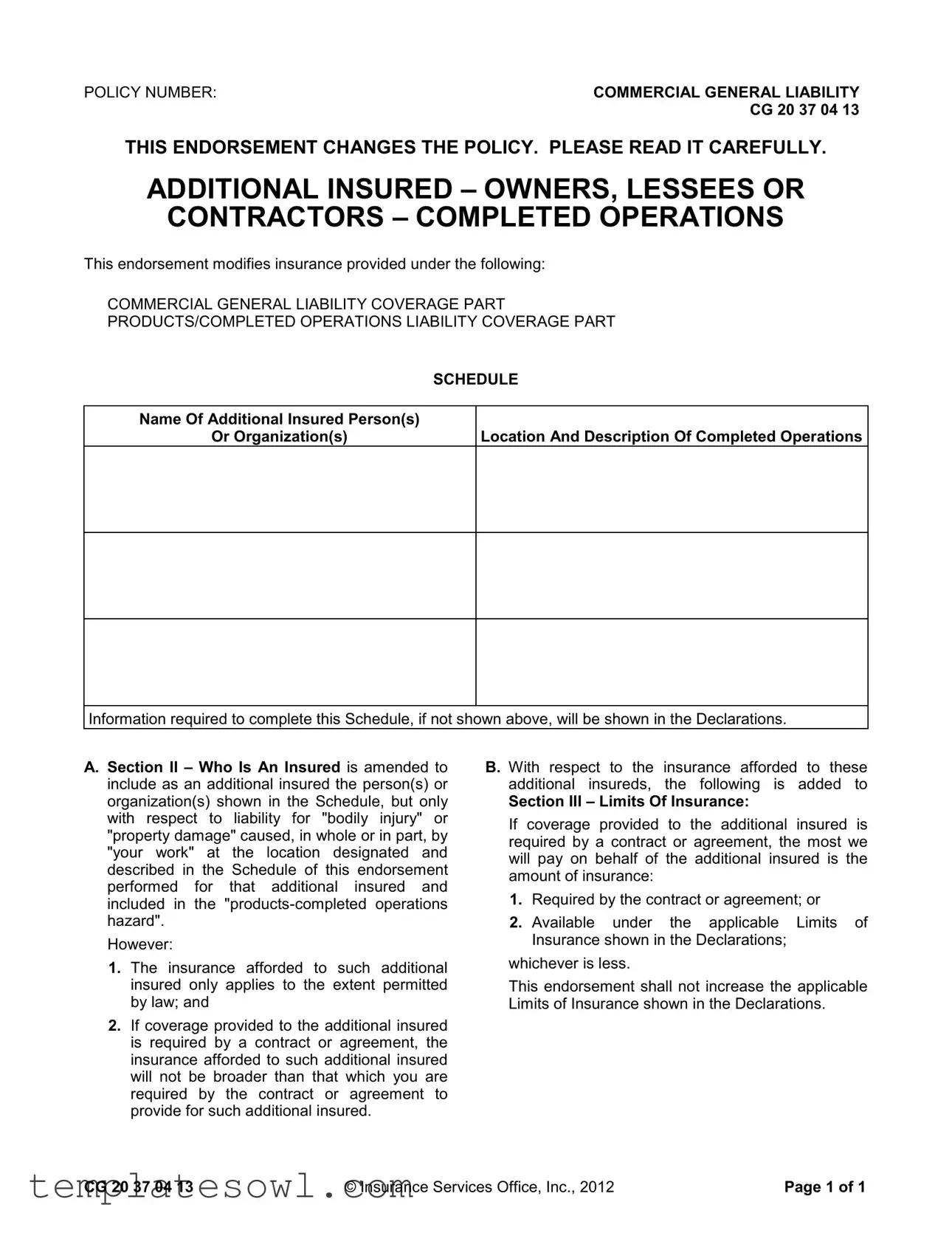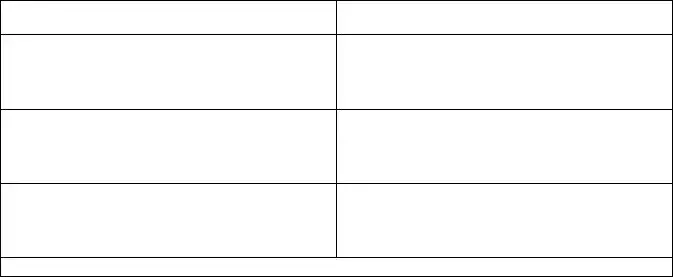What is an Additional Insured form?
An Additional Insured form is a document that allows a party, such as an owner or contractor, to be covered under someone else's insurance policy. It typically applies to Commercial General Liability policies and is important in construction or service contracts where multiple parties are involved. This form adds protection for the additional insured against claims related to work performed for them.
Who benefits from an Additional Insured endorsement?
The main beneficiaries of an Additional Insured endorsement are owners, lessees, or contractors who require coverage for potential liabilities arising from the work completed on their behalf. This protects them from having to rely solely on their own insurance and can reduce financial exposure in case of accidents or damages related to the work.
What does the endorsement cover?
The endorsement covers liability for bodily injury or property damage that arises from your work performed for the additional insured. However, it's crucial to note that this coverage is limited to the specifics outlined in the endorsement and does not expand beyond what is required by law or contractual arrangements.
Does the Additional Insured form extend coverage beyond the primary policy?
No, the Additional Insured endorsement does not extend coverage beyond the limits defined in the primary policy. It clarifies that the protection offered to the additional insured is limited to what is required by a contract or what is stated in the insurance policy’s coverage limits.
Are there restrictions on the coverage?
Yes, there are restrictions. The coverage applies only to the extent allowed by law. Additionally, if the contract requires a specific level of insurance for the additional insured, the coverage cannot exceed that level. This ensures that both parties maintain an agreement that defines liability limits clearly.
How is the coverage impacted if multiple additional insureds are listed?
If multiple additional insureds are listed, each one is protected under the endorsement, but the coverage limits apply collectively. It means that the maximum amount payable for covered claims will not increase; it will remain within the limits set in the primary policy.
What information is necessary for completing the Additional Insured form?
To complete the Additional Insured form, you need specific information such as the names of the additional insured parties and a location or description of the completed operations being covered. This detail helps clarify which operations and parties are protected under the policy.
Does the Additional Insured form require renewal?
Can an Additional Insured form be modified?
What should I do if a claim arises?
If a claim occurs that involves an additional insured, it’s important to notify the insurance provider promptly. Documentation regarding the incident and any communications with the additional insured should be maintained. This will help ensure that the claim is processed correctly and that all parties understand their respective responsibilities regarding the incident.

